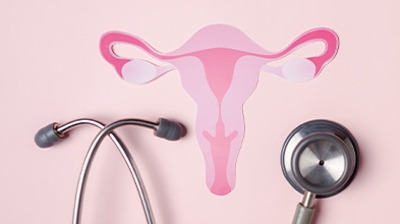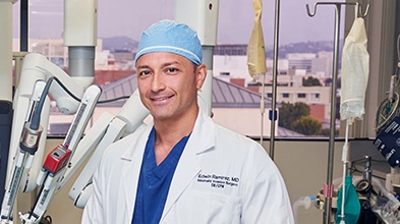

Infertility Treatment in Oxnard
Cutting-Edge Treatment Options to Help You Conceive
So, what does it mean to be infertile? Infertility is defined as being unable to get pregnant, in spite of frequent, unprotected sex for between 6 months to 1 year, depending on specific affecting circumstances. Approximately 10 to 15 percent of couples in the United States struggle with infertility. If you and your partner are having difficulty conceiving, it may be time to contact a doctor who can help you assess the situation and provide answers to your questions.
What to Expect
When seeking infertility treatment options from Rassetti Gynecology, expect compassionate care and personalized solutions. Our team specializes in comprehensive fertility evaluations and offers a range of advanced treatments. You can anticipate a thorough assessment of your medical history, diagnostic tests, and collaborative discussions to tailor a plan suited to your needs.
We prioritize open communication, ensuring you are informed and supported throughout your fertility journey. Rassetti Gynecology is committed to providing empathetic, evidence-based care to help you achieve your family-building goals.
Learn more about our cutting-edge infertility treatment options in Oxnard. Book your visit today by calling (805) 468-4886.
```
Understanding Female Infertility: Causes and Impacts
In order for a woman to get pregnant, each step in the ovulation and fertilization process must happen. However, there are some women who cannot conceive because they're afflicted by different disorders and abnormalities that prevent the completion of ovulation and/or fertilization.
Some of the common causes of infertility in women include:
- Cancers & cancer treatment: Many of the reproductive cancers have a tendency to impair a woman's ability to properly fertilize an egg. However, any cancer that is being treated with radiation and/or chemotherapy has the potential to affect a woman's fertility.
- Ovulation disorders: Ovulation is essential when an unfertilized egg is released from an ovary. However, certain disorders, such as polycysteric ovarian syndrome, hypo- or hyperthyroidism, and hyperprolactinemia, can affect a woman's hormones and thus affect the proper release of eggs. Additionally, women afflicted with eating disorders or tumors can have issues with ovulation. Eating disorders often cause women to stop ovulating, and tumors can do the same depending on their location and how they affect a woman's hormones.
- Endometriosis: This condition is when endometrial tissue grows outside the uterus. Due to the expansive growth of this tissue, it has the potential to affect how a woman's ovaries, uterus, and/or fallopian tubes function.
- Pelvic adhesions: Whether from endometriosis, a pelvic infection, or post-surgery for appendicitis or another abonimal or pelvic surgery, pelvic adhesions are when scar tissue binds with organs.
- Uterine or cervical abnormalities: Sometimes, a woman can have a misshapen uterus that presents problems with a fertilized egg binding to endometrial tissue during fertilization. However, cervical abnormalities, polyps, or even uterine fibroids can cause blockages that prevent implantation of a fertilized egg or even prevent an egg from releasing from the fallopian tubes.
- Early menopause: Menopause typically happens after a woman turns 40. However, sometimes a woman's ovaries will stop working and menopause will have an early onset. While the cause of early menopause is typically unknown, some genetic conditions (Turner syndrome or Fragile X syndrome carriers) are known to result in ovarian insufficiency.
- Fallopian tube damage or blockage: PID, which stands for pelvic inflammatory disease, often results in inflammation of the fallopian tube. Common causes of pelvic inflammatory disease include: sexually transmitted infections (STIs), pelvic adhesions, and endometriosis.
When to Consult a Fertility Specialist: Recognizing the Signs
Infertility is a difficult battle for many couples looking to conceive a child. If you and your partner have been trying without success, you may begin to wonder if infertility is to blame. Here are a few signs it may be time to see a doctor to be examined & discuss options:
- If your menstrual cycle is too long, too short, irregular, or absent altogether
- If you've been trying for at least a year without success
- If you're between 35-40 years of age, consider meeting with a doctor after 6 months of trying
- If you're older than 40 years old, you may want to discuss your options more immediately
Of course, every person is different. If you're doing a routine check-up or annual with your gynecologist - consider discussing these concerns with them directly. From there, they can recommend a path forward.
Contact Rassetti Gynecology in Ventura County for Fertility Solutions
If you and your partner and struggling with infertility, our Ventura County gynecology and fertility clinic is here to help you. Rassetti Gynecology is committed to serving our patients with compassion, respect, and providing individualized, effective care. We always make sure that you have the answers and information you need to move forward with any medical decision or treatment. We are known for our, high-quality health care for women. Dr. Edwin Ramirez, MD keeps up-to-date with cutting-edge medicine and utilizes the most current, minimally invasive techniques for a variety of gynecologic and urogynecologic issues.
To learn more, or to schedule an appointment with the doctor, contact our Oxnard office directly at (805) 468-4886.
Explore Fertility Treatment Options at Rassetti Gynecology
There could be multiple factors preventing you and your partner from conceiving, or the cause could be a single problem in you or your partner. But don't lose hope. There are many therapies and treatments available to address issues of fertility, which have been proven effective for many couples.
Comprehensive Fertility Treatments for Men and Women
- Ovulation induction
- Microsurgical tubal reversal
- Intra uterine insemination
- Semen analysis
- PCOS Treatment
- Evaluation of uterine malformation (rokitansky syndrome)
- Uterine transplantation
- Infertility work up
- Fertility preservation
- Assisted reproductive technology (ART)
- Antibiotic treatment of infections
Book Your Fertility Consultation with Dr. Ramirez Today
If you and your partner and struggling with infertility, our Ventura County gynecology and fertility clinic is here to help you. Rassetti Gynecology is committed to serving our patients with compassion, respect, and providing individualized, effective care. We always make sure that you have the answers and information you need to move forward with any medical decision or treatment. We are known for our, high-quality health care for women. Dr. Edwin Ramirez, MD keeps up-to-date with cutting-edge medicine and utilizes the most current, minimally invasive techniques for a variety of gynecologic and urogynecologic issues.
To learn more, or to schedule an appointment with the doctor, contact our Oxnard office directly at (805) 468-4886.


-
 Has Surgery Been the Recommended Cure to Your Gynecologic Condition?
Has Surgery Been the Recommended Cure to Your Gynecologic Condition? -
 Put Our Board Certified Medical Professional To Work For You
Put Our Board Certified Medical Professional To Work For You -
 Fully Equipped To Handle A Wide Variety Of Procedures
Fully Equipped To Handle A Wide Variety Of Procedures -
 Board Certified by the American Board of Obstetrics and Gynecology
Board Certified by the American Board of Obstetrics and Gynecology



